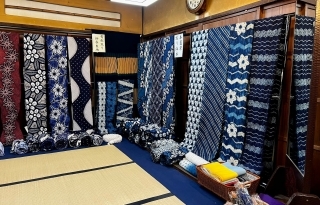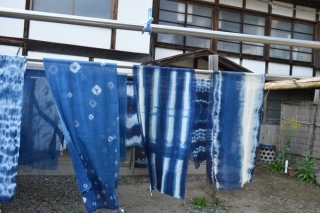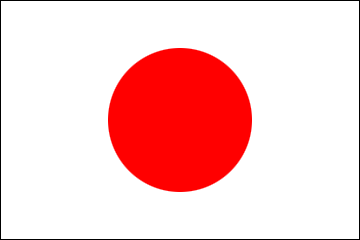Aizome (indigo-dyeing): A brief history of aizome
2023/6/14
 A Shibori Shop in Arimatsu, Nagoya – image courtesy of Janice Gunner
A Shibori Shop in Arimatsu, Nagoya – image courtesy of Janice Gunner
 Patterned dyed cloths
Patterned dyed cloths
Indigo is the one of the oldest plant dyes in existence and can be traced back to the ancient kingdoms of the Middle East. It made its way into Japan via the Silk Road approximately 1400 years ago and would go on to occupy a unique place in Japanese culture and society by enjoying popularity among aristocrats and civilians at various points in history.
While simple dyeing techniques in Japan date back to early history, textiles for the noble classes were generally patterned using weaving techniques until dyed materials started to have an influence from the 8th century onwards. After the exciting arrival of indigo in Japan, it became exclusively used in the garments of the Imperial Court in the Heian Period (794 - 1185).
Over time, the colours of aizome (indigo-dyeing) were adopted by the warrior class who started to wear indigo-dyed garments from the 12th century onwards, with the dye having the added benefit of strengthening the fabric, having an antibacterial effect and acting as an insect repellant.
A major factor in the popularity of aizome during the Edo period (1600-1868) was the increased cultivation of cotton, which along with hemp, proved relatively easy to dye with indigo. Farmers and the working class would wear in colour in their daily lives. Shops then followed suit and dyed their noren curtains indigo.
The art of aizome became so prevalent and the fabric colour so commonly worn that when British chemist R.W. Atkinson visited Japan in 1870s, he labelled the colour 'Japan Blue'.
Indigo continues to inspire in the modern era and its influence can be seen in the colour of Sky Tree, the tallest structure in Japan, and in the design of the logos of the Tokyo 2020 Olympic and Paralympic Games.
Mechanisation and chemical dyes proved to be a threat as technology developed in the 19th and 20th centuries but despite this, the traditional methods of dyeing survived.
While simple dyeing techniques in Japan date back to early history, textiles for the noble classes were generally patterned using weaving techniques until dyed materials started to have an influence from the 8th century onwards. After the exciting arrival of indigo in Japan, it became exclusively used in the garments of the Imperial Court in the Heian Period (794 - 1185).
Over time, the colours of aizome (indigo-dyeing) were adopted by the warrior class who started to wear indigo-dyed garments from the 12th century onwards, with the dye having the added benefit of strengthening the fabric, having an antibacterial effect and acting as an insect repellant.
A major factor in the popularity of aizome during the Edo period (1600-1868) was the increased cultivation of cotton, which along with hemp, proved relatively easy to dye with indigo. Farmers and the working class would wear in colour in their daily lives. Shops then followed suit and dyed their noren curtains indigo.
The art of aizome became so prevalent and the fabric colour so commonly worn that when British chemist R.W. Atkinson visited Japan in 1870s, he labelled the colour 'Japan Blue'.
Indigo continues to inspire in the modern era and its influence can be seen in the colour of Sky Tree, the tallest structure in Japan, and in the design of the logos of the Tokyo 2020 Olympic and Paralympic Games.
Mechanisation and chemical dyes proved to be a threat as technology developed in the 19th and 20th centuries but despite this, the traditional methods of dyeing survived.
Aizome: The Craft of Japanese Indigo-dyeing
Visit the Embassy to learn more about indigo dye and see the exquisite works of nine talented artists in our free exhibition.
Until Friday, 28 July 2023
Open weekdays 09:30 - 17:30, closed weekends
The Embassy of Japan, 101-104 Piccadilly, London W1J 7JT
Advance tickets: book a timeslot here.
Admission is free, but photo ID is necessary to gain entry to the Embassy.
Until Friday, 28 July 2023
Open weekdays 09:30 - 17:30, closed weekends
The Embassy of Japan, 101-104 Piccadilly, London W1J 7JT
Advance tickets: book a timeslot here.
Admission is free, but photo ID is necessary to gain entry to the Embassy.
